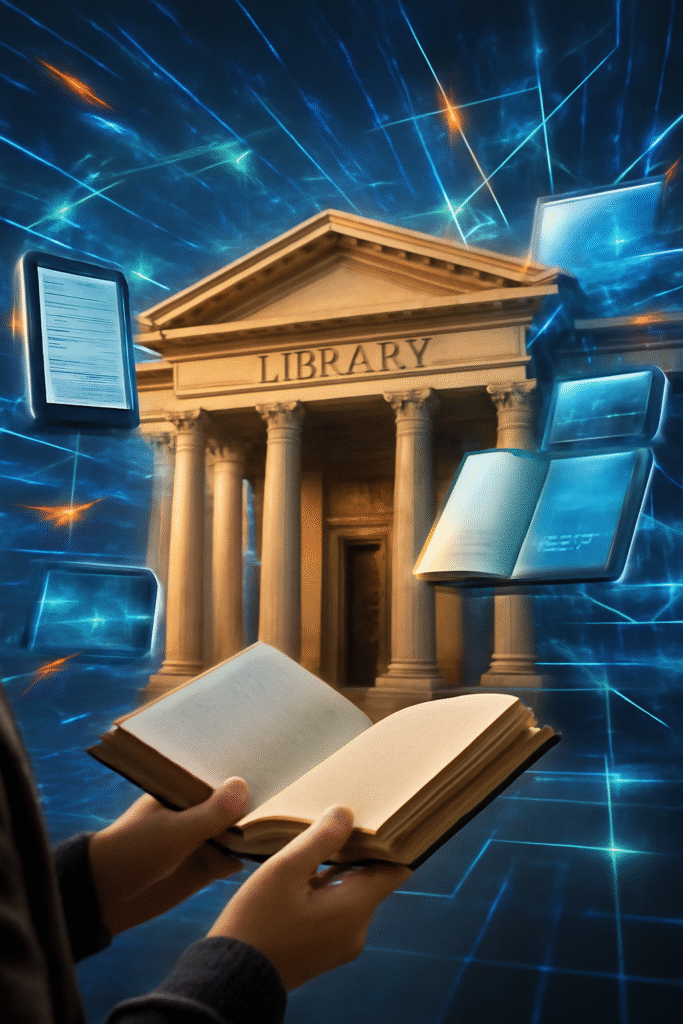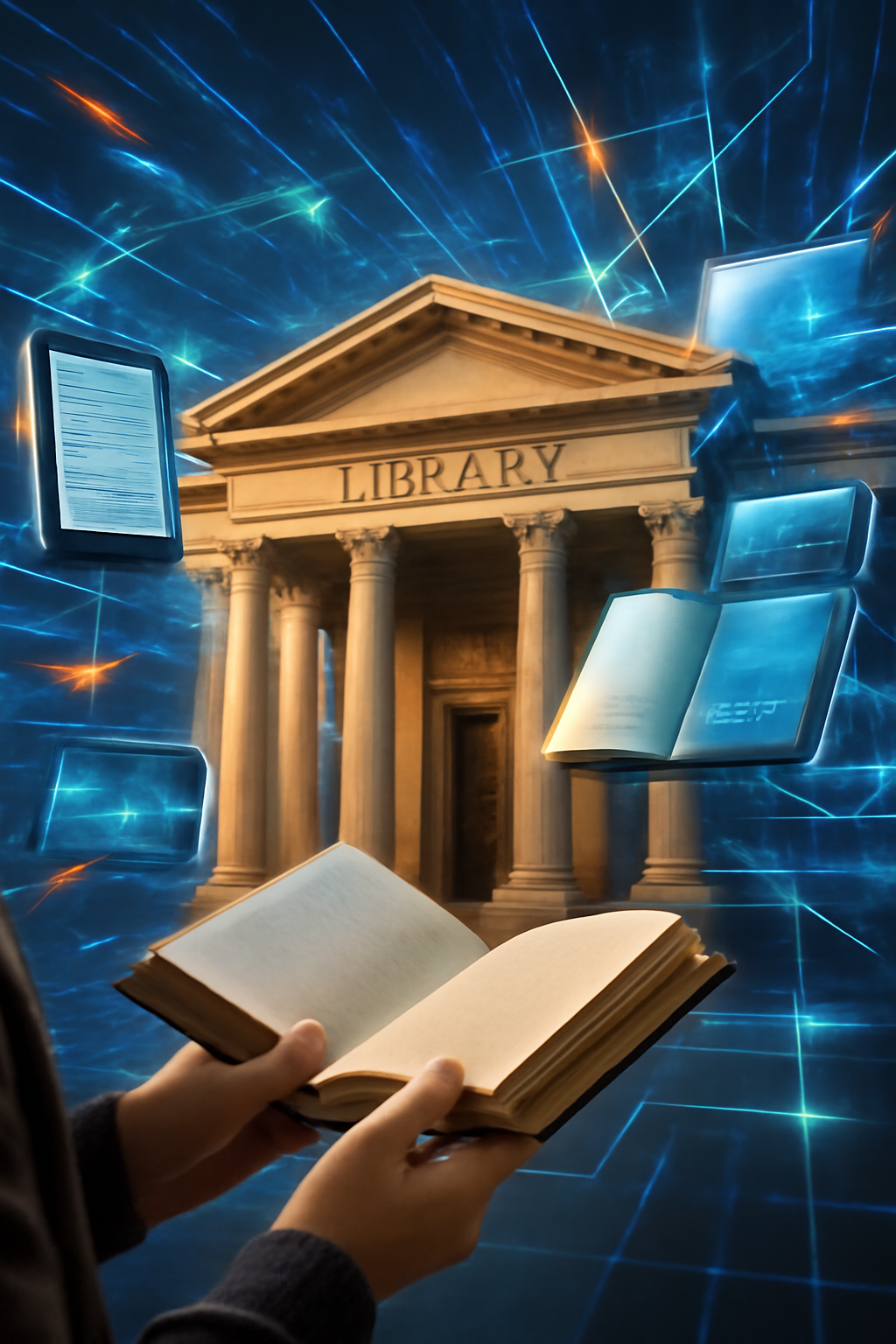By Mool Raj
In an era where information is available at the tap of a screen, it is tempting to assume that libraries have outlived their usefulness. With smartphones delivering instant answers and digital platforms offering books, films, and lectures, the quiet stacks of a public library might seem like relics of another age. Yet step inside a modern library and you will see that these spaces are not fading into irrelevance. They are, in fact, evolving—becoming vital community anchors, cultural guardians, and gateways to reliable knowledge in a world overflowing with information.
Unlike the endless streams of online content, libraries provide curated resources that meet standards of reliability and relevance. Trained professionals carefully select the books, journals, and digital materials that line their shelves and databases, ensuring that readers have access to information they can trust. In a time when misinformation travels faster than truth, that role is invaluable. Libraries do not merely distribute knowledge; they safeguard its credibility.
They also remain powerful engines of literacy and education. For children, libraries are often the first place where the joy of reading takes root through storytelling sessions, summer reading challenges, and book clubs. For students, they provide quiet study spaces, homework help, and digital learning platforms. And for adults, they extend into lifelong education, offering resources to reskill, learn new technologies, or simply explore new ideas. In underserved communities, libraries are sometimes the only space where books and digital learning tools are freely available, helping to level the educational playing field.
At the same time, libraries have reimagined themselves as hubs of community life. Far from silent and dusty, many now host author readings, poetry nights, workshops, and cultural events that bring people together across age and background. They provide safe and inclusive public spaces where people can gather without commercial pressures, an increasingly rare phenomenon in today’s world. From seniors learning to navigate smartphones to immigrants improving language skills, libraries welcome all who walk through their doors. Many even collaborate with local organizations to extend resources to those in need, whether through job search help, health awareness programs, or outreach for the homeless.
This adaptability extends into the digital sphere, where libraries bridge the gap between those with access to technology and those without. Millions still lack reliable internet or the digital literacy skills to navigate it. Libraries provide both, with free Wi-Fi, computer classes, and technology workshops. They have embraced new formats—e-books, audiobooks, podcasts, and streaming media—ensuring that learning and entertainment are accessible in multiple ways. By doing so, they remain indispensable in the fight against digital exclusion.
But their importance is not only about the present—it is also about preserving the past. Libraries are custodians of cultural memory, housing rare manuscripts, local archives, and historic newspapers. These collections protect society’s identity and heritage, offering future generations a chance to explore the narratives that shaped them. In this role, libraries function as much more than service providers; they are guardians of history and culture.
They are also catalysts for innovation. University libraries and public libraries alike provide access to specialized research databases, interlibrary loan systems, and subject-specific resources that fuel academic progress. Increasingly, they also house collaborative workspaces, innovation labs, and even makerspaces where entrepreneurs and creatives experiment with new technologies. What was once thought of only as a quiet reading zone now doubles as a buzzing workshop where ideas are tested and shared.
Inclusivity lies at the heart of these transformations. Libraries strive to remove barriers for those with disabilities, offering braille and large-print editions, audiobooks, and assistive technologies. They curate multilingual materials to serve diverse populations. Their commitment to accessibility is not an afterthought but a central part of their mission: to ensure that knowledge and resources are truly available to everyone.
The popular assumption that technology makes libraries obsolete misses the point. Libraries are not in competition with digital tools; they are in partnership with them. By combining curated knowledge with technological access, they have transformed into institutions that are both modern and timeless. They serve not only as repositories of books but as living, breathing ecosystems where people learn, connect, innovate, and remember.

As society confronts rapid change, libraries continue to adapt. They have taken on roles as training centers for job seekers, places of refuge during crises, and forums for civic dialogue. Their resilience and flexibility are precisely what ensure their survival. In the end, a library is not just about books—it is about people. It is about equal access to knowledge, the preservation of culture, and the nurturing of community.
Far from being outdated, libraries are more essential than ever. They enrich society by championing literacy, bridging the digital divide, safeguarding history, and fueling innovation. As we move deeper into the digital age, supporting libraries is not just about saving shelves of books; it is about sustaining communities themselves. If the past proves their endurance, the present demonstrates their vitality, and the future will only confirm their value.
The views expressed in this article are solely those of the author and do not necessarily reflect the opinions or views of this newspaper
